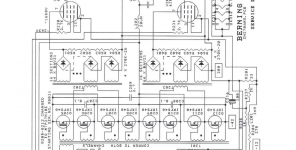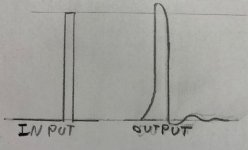Good point, but then we had heard of them as plasma speakers are still build and sold.
I do not use any now (already for more then 15 years not) because my system is in ballance and no need for additional tweeters. But i will try my old Ionovac tweeters soon (i just ordered some new electrodes for these).
See if they are still interesting to use in my set.
I do not use any now (already for more then 15 years not) because my system is in ballance and no need for additional tweeters. But i will try my old Ionovac tweeters soon (i just ordered some new electrodes for these).
See if they are still interesting to use in my set.
Attachments
Ozon is very agressive stuff and will react with almost everything including your lungs.
On the subject of hazards, nitrogen oxides are worse than ozone. When electrical discharge happens in air, some nitrogen oxides are formed. They don't disintegrate like ozone, and are quite toxic. NO2 in particular. This is the brown gas you get when you dissolve copper in concentrated nitric acid. I made so much of it in my basement chemistry lab once that I could see it floating near the ceiling. I suffered no ill effects, but later read that a concentration of 100 parts per million can cause pulmonary edema (fluid in the lungs) which happens the day after exposure and can be fatal. I bet that was a factor in Nelson Pass's experience.
I would like to experiment with the HF amp in combination with the Helium plasma. As the Helium is the medium no real HV is needed. So a AC voltage of 3KV PP should be fine. To protect the power supply diodes some shunts need to be inserted and some resistors in series with the diodes. I would like to try a cell with 2 tubes in PP. And if this works then can be multiplied. In this case no ballasts are needed as each PP amp has its own cell.
Attachments
Last edited:
I'm not trying to say they don't appeal to some listeners, but if they had a significant advantage over other technologies, you would think they would have gained more traction in the marketplace (at least for cost-no-object designs).
Good points. The cost would repel most, and the helium tanks. Imagine the Wife Approval Factor on that! Burning 2 kilowatts could hold off many as well, and that's not counting the amps for the low end. All told, the electric bill would be a contender for the helium cost. And on top of that, the fear of poisoning the air. Hill claimed no ozone, and no ill effects, but did admit the speakers made a smell.
Hill experimented with different gasses. he mentioned hydrogen and argon. Hydrogen produces water vapor if any air gets in, not good. Argon costs more than helium, and though I like the inert gasses, the others are even more expensive. I have a small tank of krypton, but at 50 cents a liter, forget that. Neon would be pretty too. So, what about nitrogen? If we can keep out the oxygen, no poisonous gas issues. And what about CO2? Would it break down in the glow? Thought about freons, but those might break down, then you get fluorine, chlorine, carbon, hydrogen, blah!The helium is a pain but i think it is worth the effort to try building it anyway.
I'm sure Hill had a good reason for helium, but it's worth a try to find a cheaper option. Still have not given up recycling the gas.
The ability of a speaker to accurately reproduce sound does not hinge on frequency response only. Harmonic and IM distortion and transient response matter, regardless of the sample rate or origin of the signal.
A transient is nothing more than a high frequency component of a given sound.
If you want to emphasize the transient of a kick drum in a recording for example you just boost the 8-10kHz frequency range.
A transient is nothing more than a high frequency component of a given sound.
If you want to emphasize the transient of a kick drum in a recording for example you just boost the 8-10kHz frequency range.
Boosting the frequency range of the harmonics associated with the transient will also boost the unwanted distortion and increase excursion, making it worse. I've exaggerated the effects in the graph below. Ideally, the output would be identical to the input, but that troublesome aspect of physics won't allow it.
ESLs do better for clarity than cone speakers because the mass is low, excursion is low, and damping is good. Imagine near total elimination of the mass. The output would be much closer to what we asked the speaker to do.
Attachments
This makes sense as with a good tweeter the bass response improves a lot... (my experience)
Sure. The bass contains harmonics into the high end. It all has to be there to sound right. Amazing how horrible the midrange sounds when you turn off the high end amp. My thinking is that there is a reason why everyone who heard a Hill got their Bleep knocked in the dirt. Transient response issues don't go away with EQ tricks. It would be great if they could be removed.
No eq in my setup. One poweramp and 1 speaker. No filters anywhere ( only limited by the electronics and mechanical properties of the parts used and combination thereof ).
That is a beautiful thing. Full range panels doing it all? Tell me about it.
I have posted some info here:
Defying Conventional Wisdom Worked. Hybrid ESL
I remember seeing that. It looks like you have an acoustic lens on them, curious about D/S spacing, voltage, you know, all the specs. I regret the distance from here to Hoofddorp. Long term fascination with the Netherlands, a lovely part of the world.
Totally off the subject, I wonder if you are familiar with Tori Amos' "Boys for Pele". My go to for testing audio. Little EQ or effects, one of the clearest recordings I've heard. In "Not the Red Baron" Tori responds to a question, "What language? It's Dutch." Low level talking can be heard in the background. I have wondered if it's understandable to a native.
Yes, the rectifier is incorrectly drawn on the schematic. I have seen this kind of error before on other schematics. Not sure if it was done intentionally or not. Keeps you allert ! Especially if you did not see it !!!
Thanks, for pointing it out !
I have multiple ESL sets. The Beveridges are not in use now as they are my backup system...
Usually i use my Acoustats as these can produce a much higher volume. I like Opeth the progressive metal band...
I also have Boys for Pele by Tori Amos. I will check it out... I will let you know if i can hear what they are saying..
Thanks, for pointing it out !
I have multiple ESL sets. The Beveridges are not in use now as they are my backup system...
Usually i use my Acoustats as these can produce a much higher volume. I like Opeth the progressive metal band...
I also have Boys for Pele by Tori Amos. I will check it out... I will let you know if i can hear what they are saying..
I'm so glad someone else is giving building a hill plasmatronics replica a shot, I tried to build one last year as an overambitious high-school graduation project, but hit a wall trying to figure out the electronics.
On the topic of ozone generation, the DC glow discharge used by the Hill plasmatronics produces very little compared to corona discharges used by the earlier mentioned speakers designed by Nelson Pass, so it shouldn't pose a problem when using an inert carrier gas like helium to form the plasma.
Finally, this might not be of much concern to Lampie519, as he is planning to use electrostats for frequencies below 700Hz, but after examining the underlying principles for sound production using DC glow discharges (as described in the plasmatronics patent), it seems possible to create a full range version of the original speaker, using a carrier gas with a higher density such as Argon. This would be ideal because it would eliminate the need for crossovers and other problems related to conventional methods of sound production.
I spent over 300 hours trying to gather all the bits of information about this speaker, so I am very excited that others have decided to give the plasmatronics the attention it deserves!
On the topic of ozone generation, the DC glow discharge used by the Hill plasmatronics produces very little compared to corona discharges used by the earlier mentioned speakers designed by Nelson Pass, so it shouldn't pose a problem when using an inert carrier gas like helium to form the plasma.
Finally, this might not be of much concern to Lampie519, as he is planning to use electrostats for frequencies below 700Hz, but after examining the underlying principles for sound production using DC glow discharges (as described in the plasmatronics patent), it seems possible to create a full range version of the original speaker, using a carrier gas with a higher density such as Argon. This would be ideal because it would eliminate the need for crossovers and other problems related to conventional methods of sound production.
I spent over 300 hours trying to gather all the bits of information about this speaker, so I am very excited that others have decided to give the plasmatronics the attention it deserves!
Last edited:
We will need all the help we can get if we want to succeed in building a prototype.
I too think a full range speaker is possible but let's start small to get to understand the idea and it's challenges.
The electronics part is not complicated here...
I would like to try a HF amp as in a DC glow discharge more energy is waisted.
I too think a full range speaker is possible but let's start small to get to understand the idea and it's challenges.
The electronics part is not complicated here...
I would like to try a HF amp as in a DC glow discharge more energy is waisted.
Last edited:
- Home
- Loudspeakers
- Planars & Exotics
- Hill Plasmatronics: Bit by the plasma bug
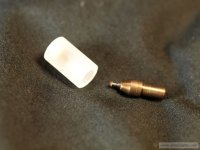
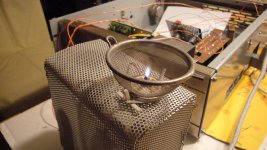
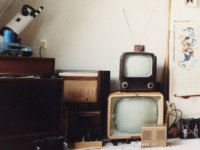
![IMG_9843[1].jpg](/community/data/attachments/855/855117-1555899ce01b4a2b13cb404405b6b5c5.jpg)
